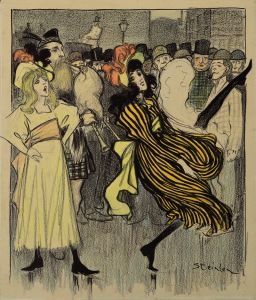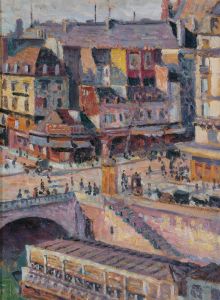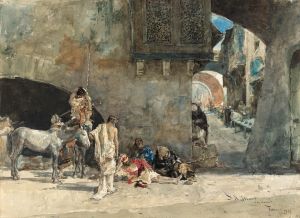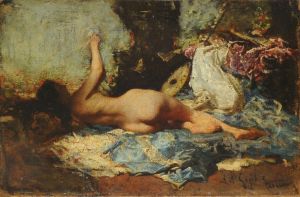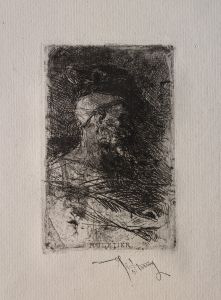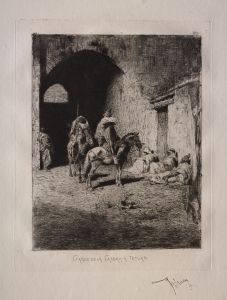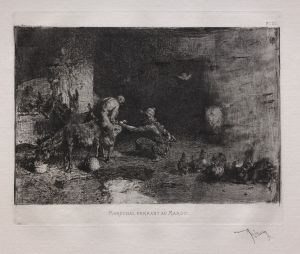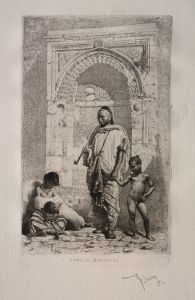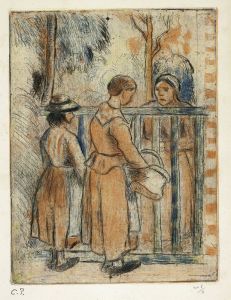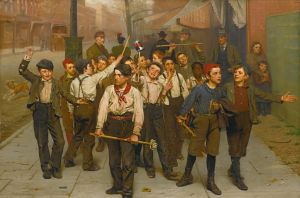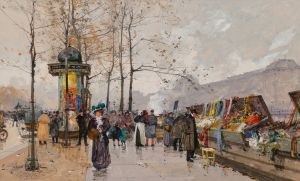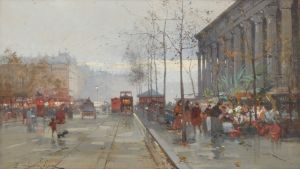
Beggar
A hand-painted replica of Mariano Fortuny Marsal’s masterpiece Beggar, meticulously crafted by professional artists to capture the true essence of the original. Each piece is created with museum-quality canvas and rare mineral pigments, carefully painted by experienced artists with delicate brushstrokes and rich, layered colors to perfectly recreate the texture of the original artwork. Unlike machine-printed reproductions, this hand-painted version brings the painting to life, infused with the artist’s emotions and skill in every stroke. Whether for personal collection or home decoration, it instantly elevates the artistic atmosphere of any space.
Mariano Fortuny Marsal, a prominent Spanish painter of the 19th century, is renowned for his meticulous attention to detail and his ability to capture the essence of his subjects. One of his notable works is "Beggar," which exemplifies his skill in portraying the human condition with empathy and realism.
Mariano Fortuny Marsal was born on June 11, 1838, in Reus, Catalonia, Spain. He showed an early aptitude for art, which led him to study at the Escola de la Llotja in Barcelona. His talent soon became evident, and he received a scholarship to study in Rome, where he was influenced by the works of the Renaissance and Baroque masters. Fortuny's time in Rome was crucial in shaping his artistic style, which combined realism with a keen observation of light and color.
"Beggar" is a testament to Fortuny's ability to depict the everyday lives of people with dignity and respect. The painting features a solitary figure, a beggar, captured in a moment of stillness. Fortuny's use of light and shadow in the painting highlights the textures of the beggar's worn clothing and the roughness of his surroundings, emphasizing the harsh realities of poverty. The composition is carefully balanced, drawing the viewer's eye to the beggar's face, which is rendered with remarkable detail and sensitivity.
Fortuny's work often reflected his interest in social issues, and "Beggar" is no exception. The painting invites viewers to contemplate the plight of the less fortunate, encouraging empathy and understanding. This focus on social realism was a common theme in 19th-century art, as many artists sought to shed light on the struggles of the lower classes during a time of significant social and economic change.
In addition to his technical prowess, Fortuny was known for his innovative use of color. In "Beggar," he employs a muted palette that enhances the somber mood of the scene. The subtle interplay of colors adds depth and dimension to the painting, showcasing Fortuny's mastery of his craft.
Mariano Fortuny Marsal's career was tragically cut short when he died of malaria at the young age of 36 in 1874. Despite his brief life, he left behind a legacy of remarkable works that continue to be celebrated for their beauty and insight into the human experience. "Beggar" remains a significant piece in his oeuvre, exemplifying his commitment to capturing the truth of his subjects with compassion and artistry.
Today, Fortuny's works are held in high esteem and can be found in major museums and collections around the world. His influence extends beyond his lifetime, inspiring future generations of artists to approach their subjects with the same level of detail and humanity. "Beggar" stands as a poignant reminder of the power of art to reflect and comment on the social issues of its time, a testament to Fortuny's enduring impact on the art world.





